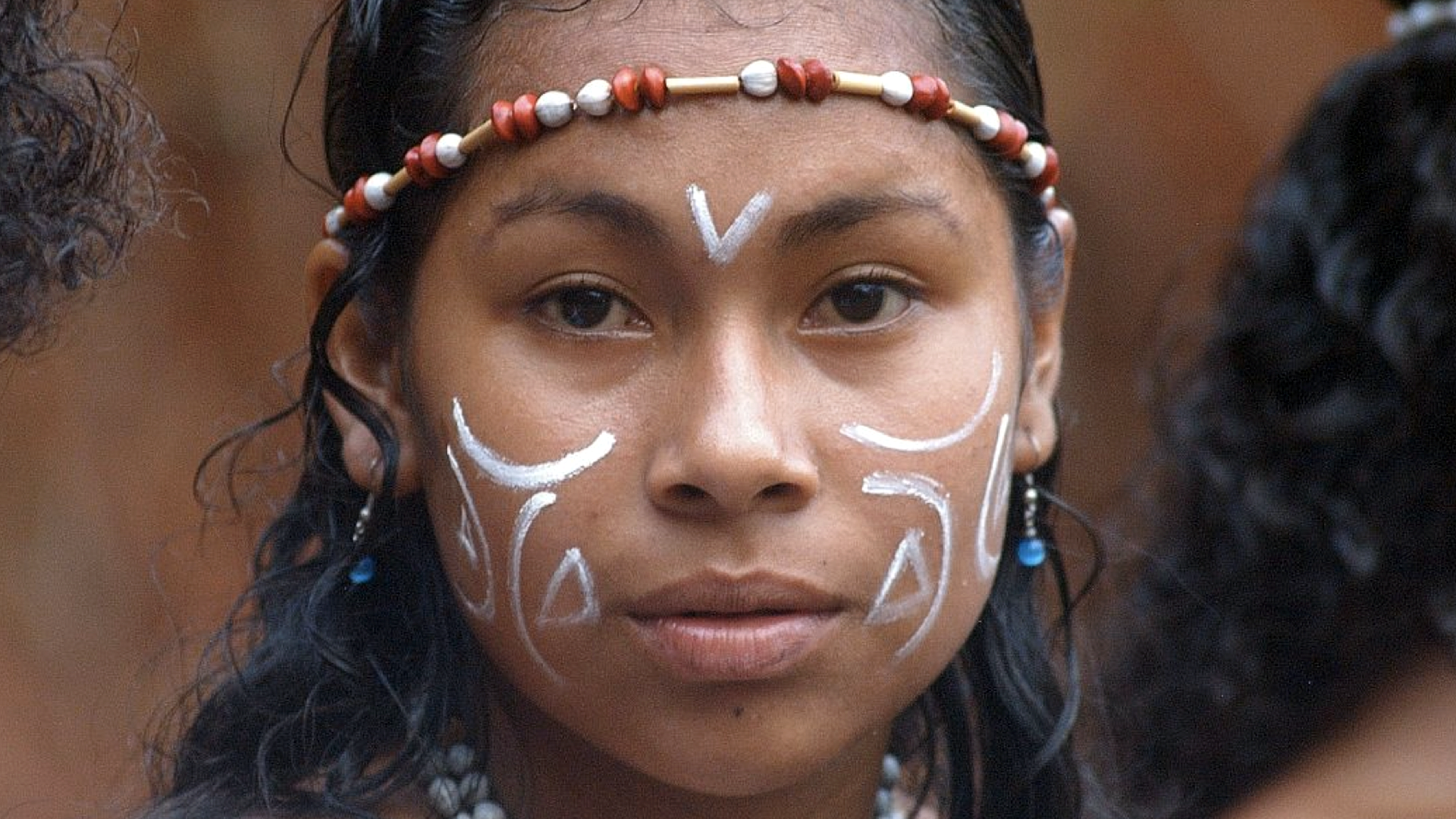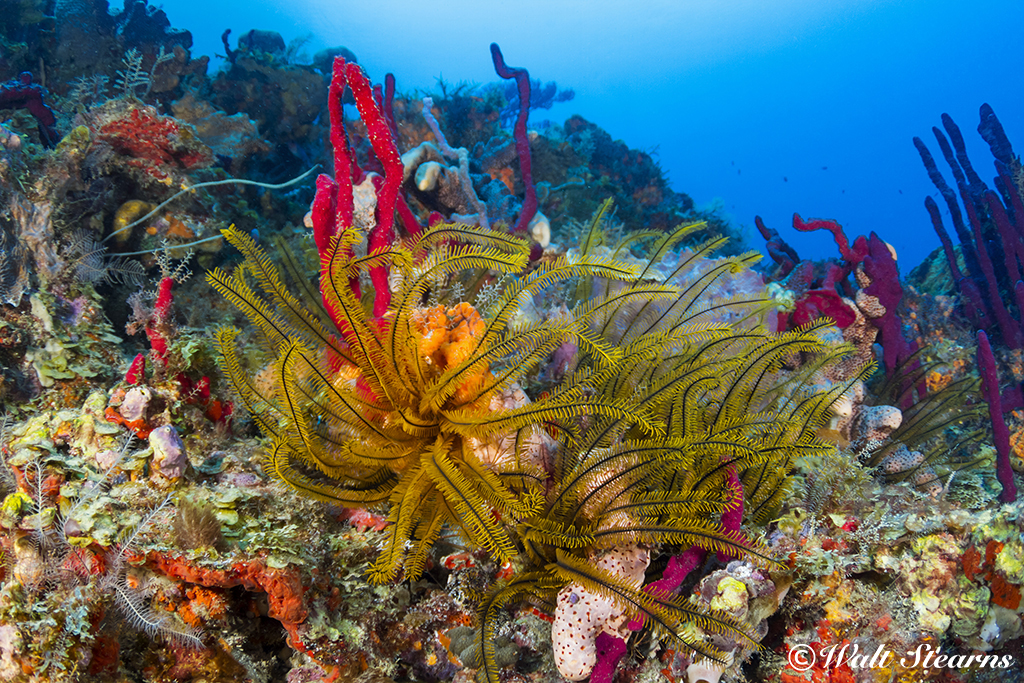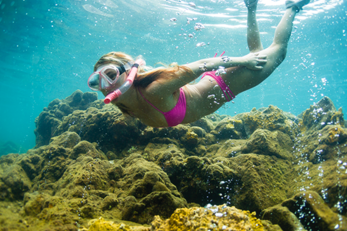
Swim fins, hiking shoes, or comfy sandals? If you're heading to Dominica, you'll want to pack all three, because it would be a shame to miss out on any of the unique experiences, adventures and relaxations that await both on land and under the sea.

With most of its landscape covered in forest and fields of emerald green, and shores that are home to vibrant marine preserves, Dominica lives up to its nickname of “the Nature Island.” This lush landscape attracts eco-tourists, divers and vacationers in search of a simpler and more authentic Caribbean island experience. There are no high-rise hotels on the island, no casinos or duty-free zones, and—save for the occasional day-trippers who come by cruise ship—usually 2,000 or fewer visitors on the entire island at any given time.
Land Tours
The island of Dominica is home to the last members of the indigenous Kalinago people, a pre-Columbian culture that continues a way of life dating back more than a thousand years. Located in a remote valley on the island's eastern shore, the Carib Territory is a 3,700-acre special district set aside for the Kalinago. The land is communally owned by the group, who continue a traditional way of life. Tours of the Carib Territory include demonstrations of signature handicrafts, visits to heritage farms that maintain centuries-old agricultural traditions and walking tours on historic footpaths with native guides.

On a lush, mountainous island that boasts more than 360 rivers, waterfalls are a given. Dominica has dozens of favorites, some of which can be reached with a roadside stop and an easy stroll, others which will require a bit more commitment. Just a short drive from the capital city of Roseau, a visit to the twin cascades of Trafalgar Falls is one of the most popular outings. An easy 10-minute walk on a maintained path leads to a viewpoint to take in 125-foot Papa Falls and adjacent 75-foot Mamma Falls. After snapping a few photos, it's worth scrambling down to the base for a refreshing dip in cool waters or a quick soak in the hot springs that bubbles from the ground at the base of the larger falls. Trafalgar trips often include a visit to the Morne Trois Piton National Park to view the Emerald Pool, and a stop at the Dominica Botanic Gardens.
Learn more about Hiking in Dominica.


Swimming is out of the question at one of Dominica's other signature adventures. Hikes to the alpine waters of Boiling Lake pass through the Valley of Desolation, where sulfurous clouds of steam escape from superheated volcanic vents. True to its name, the lake is a flooded fumarole that froths and boils. This four-hour trek to the lake can be taxing and is best left to the fit and adventurous. On the way back, hikers can stop off at a nearby hot springs resort to soak tired muscles in warm, mineral-rich pools.
Decidedly easier adventures await on the waters of the Indian River, where visitors can take a paddling trip up a shadowy channel lined by the gnarled roots of massive swamp bloodwood trees. Cinema buffs may recognize this as the location of the witch Tia Dalma's swamp shack in Pirates of the Caribbean: Dead Man's Chest. Another relaxing outing is a visit to Cabrits National Park, which is home to Dominica's most important historic site, the Fort Shirley Garrison. This 18th--century fortress was the site of a rebellion that lead to the freeing of all slave soldiers in the British Empire. The park also includes a number of walking trails that lead through wetlands and take in cliffside views of the Caribbean.
The Diving Scene
The underwater landscape of Dominica is the most dramatic and varied in the Caribbean. It is also among the healthiest. The island is ringed by a coastal shelf of volcanic rock covered in a high density of hard and soft corals. Volcanic origins are evident in a seascape riddled with pinnacles, swim-throughs and bubbling fumaroles, while the nation's commitment to conservation is evident in the wealth of marine life and healthy hard and soft corals that thrive within a trio of marine reserves.

Dominica is one of the few places in the Caribbean where you are likely to see crinoids. Reefs also hold a range of small tropicals, from a myriad of small gobies and basslets to the eye-popping bright red hues of long spine squirrelfish and black bar soldierfish, which gather in large schools. Thanks to the reefs' protected status, there are numerous parrotfish and a population of mature grouper.
The island's southwest coast offers the most dramatic profiles, and is the most popular, though diver traffic is light in all areas as compared to many other Caribbean destinations. One of the best-known sites is the Scotts Head Pinnacle, where dives begin with a swim through a Swiss cheese-like rock formation that leads to the steep flank of a volcanic crater. Nearby Scott’s Head Drop Off presents an intensely colorful landscape of pink and azure vase sponges, orange icing sponges, yellow tube sponges, and green rope sponges, with many small nooks and crannies that hide lobster, crabs, and cleaner shrimp.


Another famous dive site is Champagne Reef, so named for the gas bubbles that rise from underwater hot springs below the corals. It's one of the best places on the island to find frogfish, seahorses and flying gurnards, and an excellent night dive that yields squid, octopus, large crabs and lobster
Mid-island sites provide some of the Caribbean's best muck diving. The Canfield Tug Wreck adds variety to a seascape and Rena's Reef offers an explosion of hard and soft corals in lavender, violet, orange and yellow. Sites such as Castaway Reef and Rodney's Rock provide hours of exploration for small treasures. Another unique feature are the fumaroles—submerged volcanic vents that heat the sea floor. At Hot Sophia and Point Ronde, sand bottoms are hot to the touch.
Dominica's northwest coast is known for prolific growths of feather stars and sponges. The site known as Shark's Mouth didn't actually earn its name for these apex predators, but instead for the thick growths of basket sponges that are said to give the slope the appearance of a toothy shark jaw.
Learn more about Diving in Dominica.

Visitors who are more interested in relaxation than adventure can plan spa visits, town tours, sunset sails, whale watching excursions and quiet times on secluded beaches. Social scientists have declared the people of Dominica to be among the happiest and longest-lived in the world. Spend some time on this rich and scenic island and you will understand why.
Learn more about Dominica by contacting us at 800-328-2288 or send us an email at sales@caradonna.com.
